Created 2022/ updated 2023
Montessori Children’s House
Environmental and Sustainability Plan
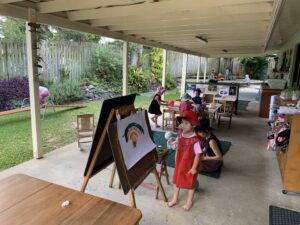
Acknowledgement of Country
Here is the land,
The water,
And the sky.
Here are my friends and
Here am I.
Hands up, Hands down
We are on Aboriginal Ground
Nature Play Queensland
“A growing body of evidence indicates that for humans to thrive in harmony with nature, we need to understand the importance of integrating it into our lives. People of all ages who participate in nature-based activities tend to be happier and healthier than those who do not.”
“Nature play is when children are provided with the opportunity to engage in unstructured play activities in outdoor settings where natural elements feature, such as logs, rocks and water, as opposed to conventional manufactured play equipment. It is when children create their own play using natural features” says Associate Professor Janet Dyment from the School of Education at the University of Tasmania.
Playing in and with nature is a simple yet powerful activity that can provide enormous benefits for children. If you complement playing in nature with learning outdoors, the children in your family, your care or your class have the potential to develop into resilient, happy and engaged people.”
Vision statement
The Montessori Children’s House aims to work collaboratively to:
- Provide an engaging, natural, and sustainable learning environment for children, educators, and families.
- Actively promote environmental awareness and encourage children and families to protect the environment through modelling and education.
- Reduce the current environmental impact of the centre’s activities.
- Cultivate a lifelong respect of environmental awareness and care.
Our pedagogy – Dr. Maria Montessori on nature and outdoor play
Dr. Maria Montessori understood the important role of nature and outdoor play on a child’s healthy development:
“There must be provision for the child to have contact with nature; to understand and appreciate the order, the harmony and the beauty in nature.”
Dr Montessori was so convinced of the power of the natural learning environment that she advocated for children to have unfettered access to the outdoors. In her ideal world, there would be no separation between the indoor and outdoor classroom.
At the Montessori Children’s House we embrace this idea as the core of our Environment and Sustainability plan. If the children spend time outdoors, and whilst indoors are learning about the environment, they will develop empathy, understanding and appreciation. We want to want to empower children to pursue what is innate.
In our Philosophy we state that:
The centre actively promotes all forms of sustainability and encourages children, families, and staff to protect the environment. We acknowledge Aboriginal Culture as the longest continuing culture and embed an Aboriginal perspective so we can learn how to connect to Country and walk beside Aboriginal and Torres Strait Islander peoples.
‘When children come into contact with nature, they reveal their strength.’
Maria Montessori
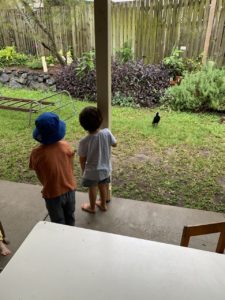
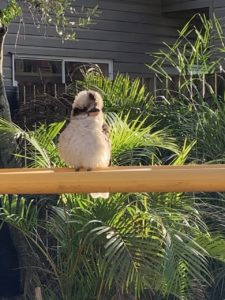
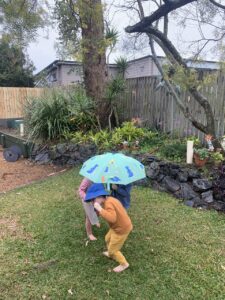
Our local environment
The Montessori Children’s House is located in the inner-city suburb of Auchenflower, Scottish for ‘field of flowers’. The historic buildings, once a horse stable and a church, are surrounded by gardens and natural spaces. We are currently developing a natural play space for our Bush Kindy excursions. We have regular visits from magpies, blackbirds, bush turkeys and kookaburras. We provide a home for Native Bees and a worm farm and we have a resident Blue Tongue lizard and many other skinks and smaller lizards.
After Critical Reflection we have decided to move from a worm farm to worm habitats within our garden beds to allow the worms to come and go freely and to ensure they are sustainable over our school holiday breaks.
‘Modern observations and child-study have led us to realise that as soon as the child can go outdoors, we must take him with us.’
Maria Montessori
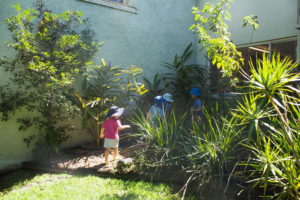 Nature Play at the MCH. What does it look like?
Nature Play at the MCH. What does it look like?
Where do we go?
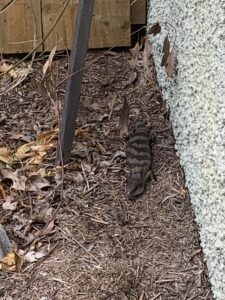
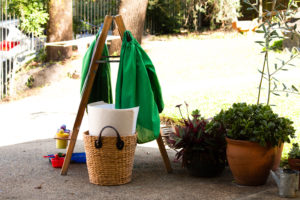
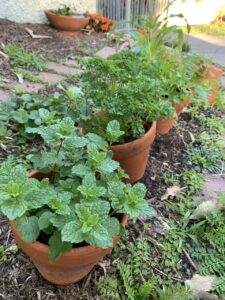
Our yard
Grassy areas surrounded by gardens and native plants. We have a leafy canopy for shade and flowering trees like our frangipani and hibiscus. We have a large sandpit, and we are developing a wet sand area under the arches of some Lilipilly trees. We provide Open ended resources (loose parts)
Our yard is filled with a variety of natural elements, surfaces and materials that exist as open-ended provocations and contexts for play. The children can bring their own interests, curiosities and knowledge to these spaces as they negotiate the focus and refine the skills and processes of their play.
‘There must be provision for the child to have contact with nature, to understand and appreciate the order, the harmony and the beauty in nature… so that the child may better understand and participate in the marvellous things which civilisation creates.’
Maria Montessori
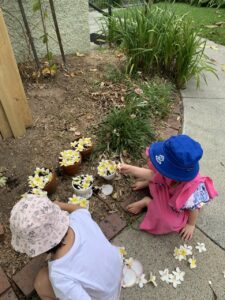
Where do we go?
Our Secret Garden
A curved grassy space which is accessed through an ally of Lillypilly trees. We come here as a group or with a teacher as the garden is tucked away. This makes it a special place to come.
We love to come here with our big gathering circle mat for yarning, music times, picnics, celebrations, tea parties, lying on the mat looking up at the trees and listening to the birds, and best of all rolling down the hill. We also hold our Easter Egg hunts here.
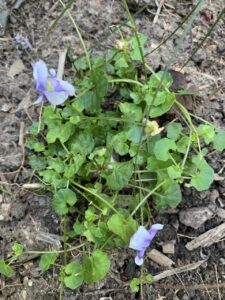
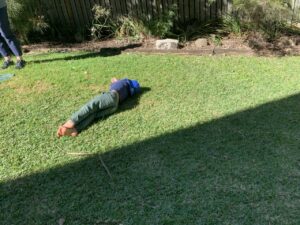
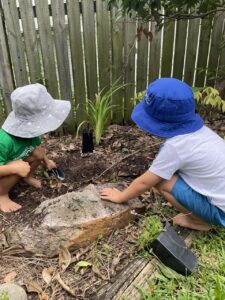
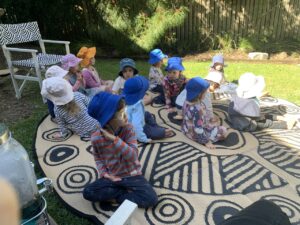
Where do we go?
Our Bush Kindy natural play space
This natural play space is hidden away behind the lower building, the Montessori Infants’ House. So, we can go on an excursion without crossing any roads and without requiring transport. The land is sloped with some scree, and a sand hill. There is also a tree with a big strong branch for a swing. We have collected some logs for balancing and some planks for sliding down. We are collecting materials for building shelters like bamboo, palm fronds, branches, and string. Some children just enjoy sitting on the mat and just bring.
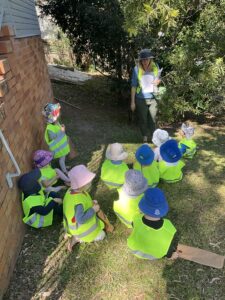
What do we wear?
- Hat
- Sunscreen
- Appropriate shoes
What do we take?
Children take a drink bottle, hats and shoes on their feet.
In the trolley, the children have access to:
A large mat
- Clipboards with pencils and paper, art materials
- Magnifying glasses, binoculars, and wildlife identification literature
- Bamboo half tubes and balls
When do we go?
We go in term 2, 3 and 4 when the children are settled and comfortable with a change in our routine. We can go at any time of day as there is shade and we are close to our kindy facilities. Our ventures beyond our gates are not limited by a schedule. Provided we have 3 staff, we are able to engage in either planned or spontaneous trips into our nature play space. This enables us to respond to any relevant unforeseen variables, interests or questions that may arise.
Why do we go?
| We are providing an educational program that complements and further expands the children’s existing kindergarten program. Outdoor learning responds to current Australian Standards, Early Years Curriculum and Government Educational Goals.
‘It is necessary for his physical life to place the soul of the child in contact with creation, in order that he may lay up for himself treasure from the directly educating forces of living nature.’ Maria Montessori |
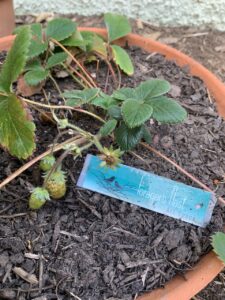
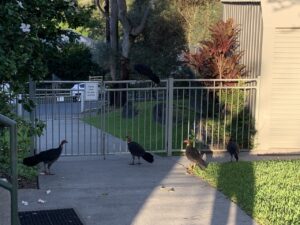
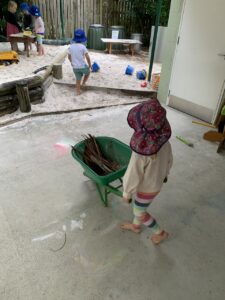
Environmental and Sustainable play contributes to providing a holistic curriculum delivered by qualified and experienced professionals. A holistic curriculum considers Physical and Gross Motor, Fine Motor, Sensory, Self Help, Language, Cognitive, Emotional, Social and Spiritual development.
Outdoor ply and physical development – NaturePlay QLD
Perhaps one of the most obvious, yet still overlooked, benefits of outdoor play is on a child’s physical development. Outside, children have the room to run, jump, roll, climb, and stretch as they wish.
This is the freedom that they are often denied indoors where space is limited, and “horseplay” is often discouraged. Gross motor activities—that is, those that use the large muscle groups—like running, jumping, and kicking, are essential for developing skills like balance, depth perception, and coordination. Rigorous outdoor activity can have further benefits on the child’s cardiovascular health, too, and can promote healthy weight throughout life.
The outside world presents plenty of opportunities for fine motor development as well. The simple act of picking a dandelion requires complex fine motor skills.
More structured activities for fine motor development include collecting pebbles, tracing letters in the sand, or sorting leaves of varying colours, for example.
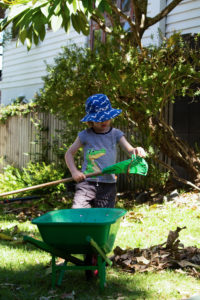
Cognitive benefits of outdoor play – Nature Play QLD
Intuitively, we all know that the outdoors feeds the mind as much as the body. Science supports this theory, too.
According to research, outdoor recess can provide a brain boost for children, enabling them to focus more and learn better once they return to the indoor classroom.
Playing outdoors has also been associated with increased creativity and problem-solving abilities.
The outdoors also presents a host of sensory learning opportunities for children. Splashing through a puddle, feeling a cool breeze, and touching the bark of a tree—these are all examples of sensory experiences that teach little ones about the world they live in.
Creativity and problem solving are also areas in which a child thrives while experiencing the outdoors. Perhaps it’s the fresh air or the endorphins that flow freely during physical activity, but some of the best ideas are often born in an outdoor environment. This is true for adults and children alike.
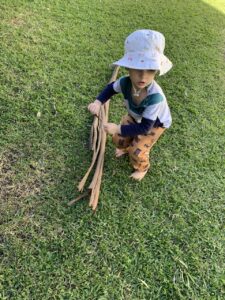 Outdoor Play and Social and Emotional Health – Nature Play QLD
Outdoor Play and Social and Emotional Health – Nature Play QLD
When you recall your own childhood memories of playing outside, you probably remember as much about who you played with as the activities themselves.
That’s because outdoor time presents rich opportunities for children to build social skills through unstructured interactions with their peers. In a Montessori environment, these opportunities are even more authentic as they provide the potential for interaction with other children of all age groups.
During unstructured outdoor play, kids have the chance to learn valuable life skills like teamwork, negotiation, verbal and nonverbal communication, and more. Any employer will tell you that these “soft skills” are every bit as important as math or science.
In terms of emotional health, outdoor play presents myriad opportunities for children to build resilience and self-confidence as they navigate the world around them.
As simple as it may sound, learning that they can get up again after falling down on the playground is a pivotal developmental milestone for little ones and one that empowers them to keep exploring and learning despite setbacks.
How we prepare for the outdoor environment – The Montessori Minded Mum
While the outdoors is an inherently less structured environment for children to explore freely, there will still be times when it’s beneficial to prepare the outdoor environment in a similar way that you would prepare the classroom or other learning environment.
The extent of this preparation will depend on the developmental phase of the child. Older children may require less preparation, for instance, while little ones may need more scaffolding as they learn to interact with the natural environment.
Whether indoors or outdoors, the key to creating an effective prepared environment is to strike a balance between structure and freedom. That is, it’s not always necessary (or even advisable) to plan out every step of an outdoor activity.
Instead, prepare the space accordingly and provide children with the tools to “feel out” an activity on their own.
For example, plan a scavenger hunt through the woods by providing a safe route and baskets for children to collect items along the way. Let children collect items they’re drawn to rather than check them off a prepared list.
This is just one example of an unstructured outdoor activity in a prepared environment. Other ideas include:
- Sand play with shovels and containers of varying sizes and shapes
- Water play with vessels and floating objects
- Tracing letters with sticks
- Stacking rocks or other natural objects
- Finding items of similar textures or colour
The Montessori Take on Outdoor Play — The Montessori-Minded Mom (reachformontessori.com)
The benefits of Nature Play for your child’s development – Nature Play Qld
Nature play promotes health benefits, including cognitive, social and emotional development, and it builds resilience and creativity as well. Experiences in nature as a child also leads to environmental awareness and stewardship later in life.
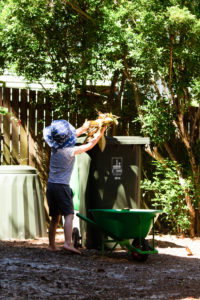
Outdoor learning and its benefits – Nature Play QLD
Outdoor learning has positive impacts for children – it works on their intrinsic motivation for learning, provides enjoyable lessons, increases creativity, and activates thinking outside the box. It also improves children’s health and wellbeing, social skills and behaviour, and furthermore has been proven to encourage better attendance, teamwork and to reduce bullying.
Why Nature Play
Play is referenced in the National Quality standards over one hundred times and is internationally recognised as the most essential and effective process for meaningful learning in early childhood. Outdoor learning provides ‘the most memorable learning experiences, [that] help us to make sense of the world around us by making links between feelings and learning’ (Great Britain. DfES, 2006, p.3).
We are so lucky in Australia to have the climate to be able to enjoy outdoor learning spaces, year round. We also have the space for natural environments which include plants, trees, edible gardens, sand, rocks, mud, water and other elements from nature. Nature invites children to engage in play through sensory experiences of sight, sounds, touch and smell.
Natural spaces invite open-ended interactions, spontaneity, risk-taking, exploration, discovery, agency, intrinsic motivation and connection with nature. They foster an appreciation of the natural environment, develop environmental awareness, ecological literacy, and provide a platform for ongoing environmental education (Early Years Learning Framework). “Research suggests the need to re-engage learners with the world as they actually experience it – ‘experiential’ or ‘authentic’ learning. It provides a framework for learning that uses the child’s own environment to enable them to construct their own learning (Nature Play Qld)”.
At the Montessori Children’s House, we advocate that playing in nature ignites children’s lifelong learning and wellbeing. Nature Play Queensland lists key ways in which exposure to the natural environment is beneficial to human health:
- enhanced personal and social communication skills
- increased physical health, supporting the development of healthy, active lifestyles
- enhanced mental and spiritual health
- enhanced spiritual, sensory, and aesthetic awareness
- the ability to assert personal control and increased sensitivity to one’s own wellbeing
Code of Ethics
As Early Childhood Education Professionals, we are guided by the Early Childhood Australia code of ethics. Nature play provision enhances our ability to meet the following ethical standards:
o Work with children to help them understand that they are global citizens with shared responsibilities to the environment and humanity.
o Create and maintain safe, healthy environments, spaces and places, which enhance children’s learning, development, engagement, initiative, self-worth, dignity and show respect for their contributions.
o Acknowledge the uniqueness and potential of all children, in recognition that enjoying their childhood without undue pressure is important.
o Acknowledge the holistic nature of children’s learning and the significance of children’s cultural and linguistic identities.
o Acknowledge children as competent learners and build active communities of engagement and inquiry.
o Honour children’s right to play, as both a process and context for learning.
Queensland Kindergarten Learning Guidelines
Nature Play Provision provides opportunities for children to engage in the following Learning Outcomes within the Queensland Kindergarten Learning Guidelines
Building a confident self-identity:
- Confidence in themselves as learners
- Confidence in their strengths and abilities
- Confidence to explore the environment and engage in a variety of types of play and learning experiences
- Confidence when approaching tasks, people, and situations
- Confidence to try new and challenging tasks
- Confidence to make choices and take considered risks.
Shows increase respect for environments:
- Caring for and respecting environments
- ways to investigate and understand natural and built environments
- exploring interactions between people and environments
- Interest in the relationships among people, land, plants, and animals
- Awareness of positive and negative interactions between humans and environments
- Awareness of ways to help sustain familiar environments
- Awareness and valuing of Australia’s environmental heritage.
Explores ways to promote own and others’ health and safety:
- ways to keep themselves and others safe, e.g., following rules, looking and thinking before jumping, swinging or running.
Explores ways to promote physical wellbeing:
- Confidence in developing movement skills and managing movement challenges
- Sensory skills and awareness, perceptual motor skills, kinaesthetic and spatial awareness,
- Balance, coordination, muscle tone, strength, and flexibility
- Fundamental movement skills, including balancing, crawling, running, jumping, catching,
- Hopping, throwing, galloping, skipping, leaping, kicking, striking, and dodging
Is building positive dispositions and approaches towards learning:
- Curiosity and wonder, creativity, enthusiasm, drive, and motivation to learn
- Awareness of their successes, useful strategies, skills for learning and when to use these in particular learning situations
- Capabilities required to make informed choices, plan, and carry out plans
- Ways to find out, research, investigate, inquire, and solve problems
- Thinking, including inferring, predicting, hypothesising, testing, experimenting, evaluating, and generalising
- Active investigation of scientific ideas, processes, and language in everyday life
- Exploration of relationships, including cause–effect, e.g. “What caused the sandcastle to collapse?”, “What happened when you made the ramp higher?”
- Awareness that they can learn by copying others, repeating and practising actions, behaviours and language
- Strategies for making links between ideas and experiences and applying learning to new situations
- Reflection by talking about and using feedback about thinking and learning. Engage in ways to be imaginative and creative.
- Imagination and experimentation with possibilities
- Appreciation of various ways of engaging with ideas, materials, processes, and a range of media
- Sensory exploration of the world, objects, and materials indoors and outdoors
- The ability to generate ideas and solutions, innovate and invent
- Exploration of and interest in multiple ways to create and represent
- Exploration of and interest in representing and creating through imaginative, fantasy, symbolic and dramatic play Explores and expands ways to use language.
- Skills for listening for different purposes and in different contexts
- Skills for taking turns to talk and listen and engage in conversations
- Developing vocabulary for describing what they see, hear, taste, smell, touch and feel
- Developing vocabulary for describing imaginative experiences, past and present personal experiences and topics of personal interest
- Developing vocabulary for exploring mathematical and scientific ideas
(Lady Gowrie Bardon Community Kindy)
Environmental Achievements
2022
We have been awarded Waste Smart Kindy status. Staff undertook training.
Set up a recycling hub – containers for change, ring top pulls (used to build prosthetic limbs for animals) bread tags (parts for wheelchairs.
We won the QECSN award for the project ‘Paper Trail’
We had a visit from the RSPCA and organised a 10C recycling pick up with the proceeded to go to the RSPCA. Children also collected donations.
Bin system for children to support recycling, composting/worm farm
Maintain our worm farm including worm tubes
Maintain our Native Beehive including extracting honey and splitting the hive. We enjoyed tasting the precious honey.
Maintained handtowels over paper towels
Planted 50 Native plants
Creating a Nature play space for excursions
2023
Current Practices
The Staff and Management Committee are focused on keeping our environments as natural as possible, embracing natural materials for children to use in their play.
Our outdoor area and adjoining Nature Play space provide many ‘moments of wonder’ and opportunities to appreciate visiting wildlife such as birds, possums, lizards including a resident bluetongue lizard.
RSPCA visited and talked about the difference between native animals and pets.
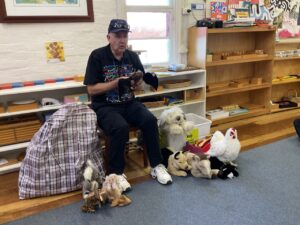
Set up a Recycling Hub
Used the Waste Smart stickers to set up a new bin system
Recycling practices include:
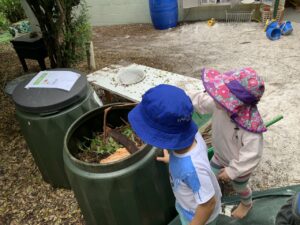
- We encourage litter less lunches and have seen a great uptake of this with many parents choosing to avoid, pre-packaged items.
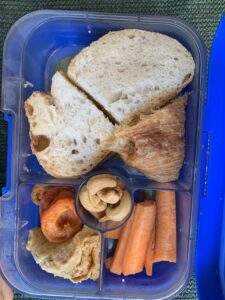
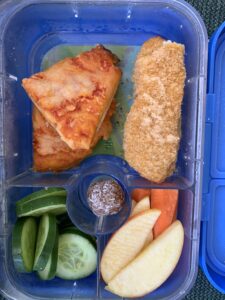
- Parents bring in recycled boxes, collage material, containers and re-usable resources for art and craft experiences.
- Recycled paper is used for painting and drawing.
- We use individual face washers for the children to dry their hands on after washing.
- We use good quality, second hand baskets, trays and materials
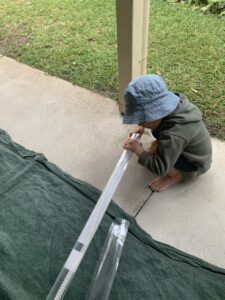
Saving Water practices include:
- Staff intentionally teach and monitor children on hand washing techniques for efficient water use.
- Children have a limited supply of water in the sandpit and digging patches.
- We fill the waterplay trough with the children on request.
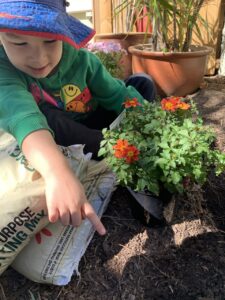
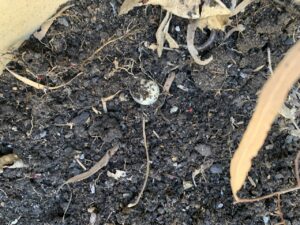
Gardening practices include:
Children are actively involved in planting and maintaining gardens and in the care and production of the compost and worm farm. We have already planted some new plants in our veggies patches and are looking forward to harvesting some in the coming months.
We explored re growing plants – avocado, carrots, sweet potatoes etc.
We have decided to decommission our worm farm in the best interest of the worms and relocate them to the veggie patch. With our prize money from QECSN we brought in ground compost bins.
Saving Energy practices include:
Children and staff turn off lights and air conditioning before going outside to play.
Lights are turned off when natural light is sufficient.
We have solar panels installed.
Other practices:
Staff intentionally teach children to use 1 pump of soap when washing their hands.
Minimal use of harsh chemicals to clean.
Eco – Efficiency. (Water, Waste, Energy)
- Temperature; Restrict use of air conditions to weather extremes.
- Intentional teaching of washing hands e.g., leave water off while soaking.
- Intentional conversations with children regarding water conservation – awareness of our water tanks and how much water is in them.
- Rethink – continue to involve families and children in decision making.
- Reduce – low waste lunches, nude food.
- Reuse – teach explicit strategies to reuse items – yogurt containers, paper, cardboard etc.
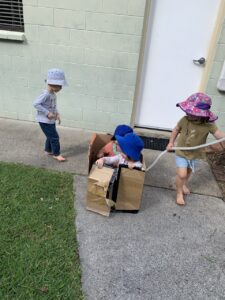
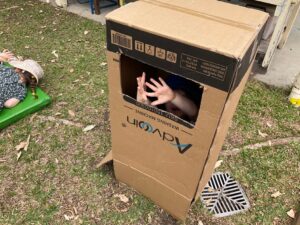
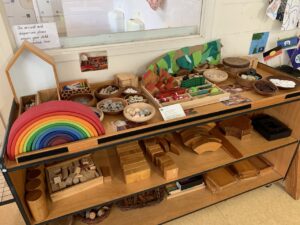
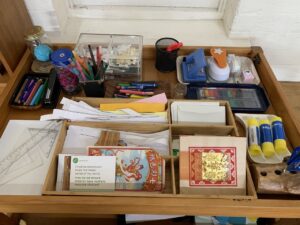
- Reduce food waste by encouraging children to eat fresh food before packaged food.
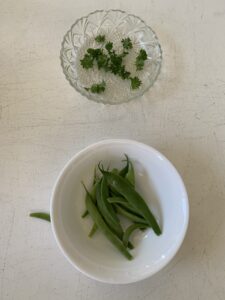
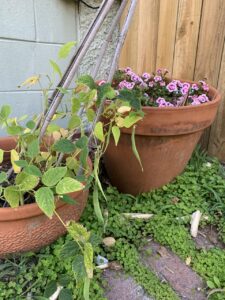
- Separate waste at mealtimes – worm food, compost and general waste.
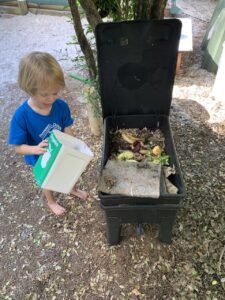

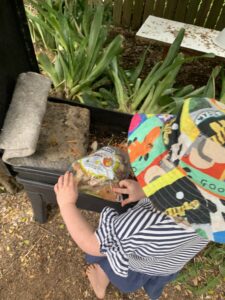
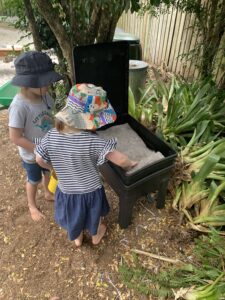
Education for sustainability
- Use a variety of teaching strategies to engage children and families in sustainability practices.(Newsletters, special guests)
- Looking after Country
- Visit by BCC Waste Smart officer
- Visit by Bruce Morgan Murri Tukka
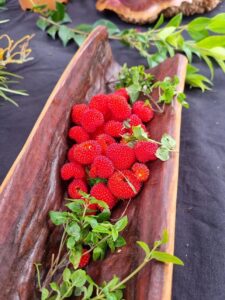
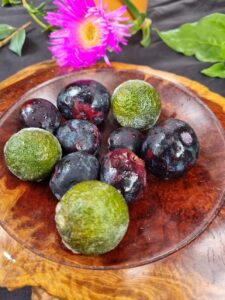
- Art – observation of nature
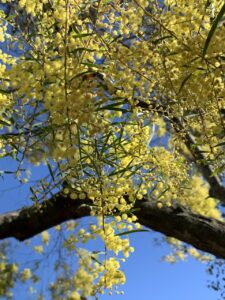
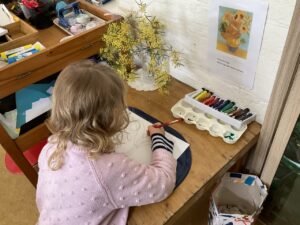
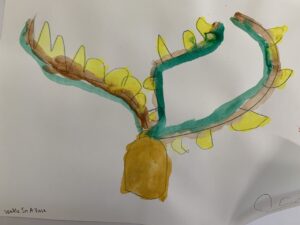
- Bringing nature inside to capture children’s interest
- Setting up a permanent space for children to display their naturally found items
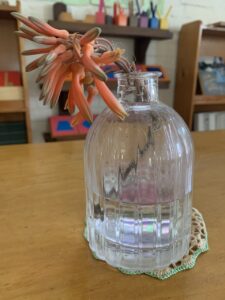
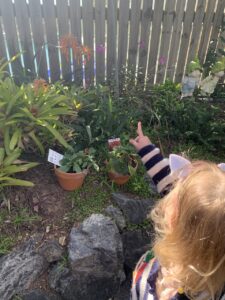
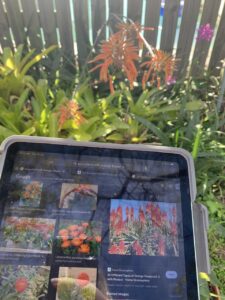
UNESCO
An Early Childhood Education for Sustainability resource that embeds the Sustainable Development Goals and STEM into pedagogical practice
Starting Early Matters and the UNESCO resource is full of fun ideas, activities and experiences that promote the creativity and curiosity of young children.
Why is it important to introduce STEM subjects in the early years?
STEM subjects help children to make sense of the world, exploring the ”what if” and the “how”. Through STEM, children begin to connect with and develop a passion for the environment, for nature, their relationship with nature and the criticality of sustainability.
What do we mean by sustainability?
We all have a responsibility to sustainability, an appreciation of our relationship with the environment, a respect of the world around us and the greater order of nature. Through this resource we have identified opportunities to embed the Sustainable Development Goals.
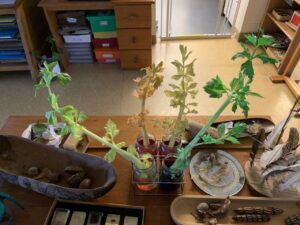
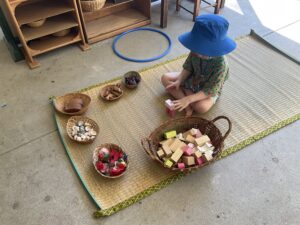
Connection with environment and community
- Invite environmental showsto kindy – Murri Tukka, Evergreen Puppershow
- RSPCA
- Shed salvaged from the Milton Community Garden
- Professional Development at Bunyaville
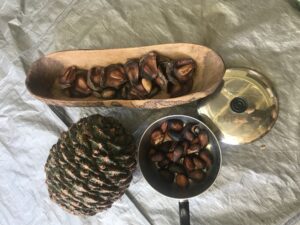
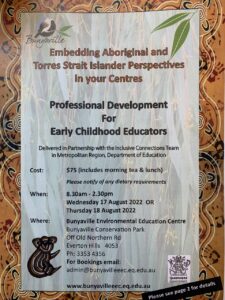
- Community Art Trail for Queensland Child Protection Week which was inspired by our environment and the safety it provides.
- MCH is a Member of Balaangala Community Group
- Excursion booked for the children in 2023 to Balaangala
- Attended the Balaangala Invasion Day gathering 2023
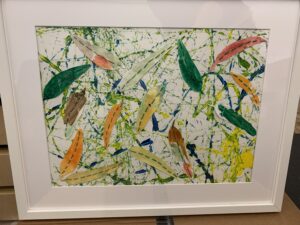
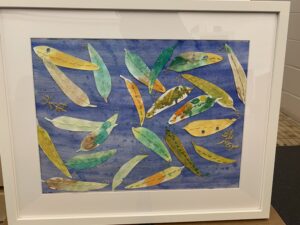
Environmental Goals for Montessori Children’s House Kindy 2022/2023
- Review our current Environmental and Sustainability Plan – Opportunity to review our current practices, highlight areas we can improve in and record in our Quality Improvement Plan. 28/1/2023
- Address Quality Area 3 Standard 3.3 elements 3.3.1 and 3.3.2 of the National Quality Framework.
- Conduct an audit of our current practices(Completed May/June 2022)as part of our Waste Smart application
- Staff to undertake Waste Smart training. (Completed May 2022 and part of our induction for new staff)
- Become a Waste Smart kindy (Achieved 2022)
- Apply for funding to establish our Nature Play Space/Bush Kindy
- Rejuvenate our Recycling Hub
- Excursion to Balaangala to learn more about native plants and to support their work in Paying the Rent to Aboriginal and Torres Strait Islander peoples
- Install a bird bath for the local birds and insects. We participate in the annual birdcount and would like to do more to create a better habitat for birds. Birds in Backyards – BirdLife Australia
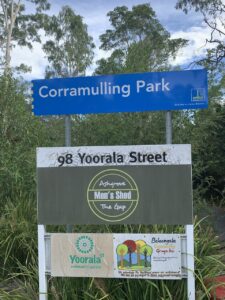
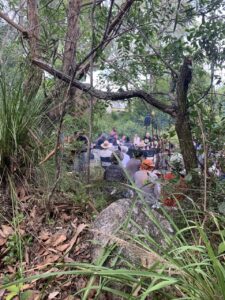 .
.
Waste smart educator
| Coordinator | |
| Lucy Jane McGinley | director@montessori-auchenflower.com.au |
Waste action plan
| Focus area | Action | Responsibility | By when | Updates / notes |
| Packaging and purchasing | Purchase 100% recycled photocopy paper. | Sam | March | Check our next stationary order |
| Buy in bulk to reduce costs and packaging. | Sam | February | We sure did! | |
| Purchase products that have little or no packaging or packaging that is 100% recyclable. | All | Immediately | We have brought materials from Reverse Garbage and upcycled materials | |
| Buy local wherever possible. | All | Immediately | Current practice | |
| Buy secondhand items | All | Immediately | We check the local charity shops and social media before purchasing | |
| Use up what we already have | All | Immediately | Box construction happening today | |
| Reducing waste | Promote waste reduction and sustainability through your early learning centre’s website and newsletter. | Lucy | Immediately | Current Practice |
| Avoid disposable plates, cups and cutlery. | All | Immediately | Current practice | |
| Encourage parents to provide rubbish-free lunches and snacks for children and discourage the use of soft plastics such as plastic cling wrap. | Lucy | Immediately | FB and Storypark | |
| Implement printer default setting to double sided printing. | Sam | Immediately | Current practice | |
| Send newsletters and other information to parents and staff electronically providing more information about waste smart initiatives. | Sam/Lucy | Immediately | We use emails and Storypark for most communication. We only print documents that need to be signed. | |
| mend broken items | All | Immediately | Current practice | |
| Reuse | Ask parents to bring in empty containers, large sheets of paper that have only been used on one side and other items that could be used for craft, art and other activities. | Lucy | Immediately | It’s in our Prospectus.
Email sent |
| Encourage the use of reusable containers such as lunchboxes and drink bottles for children and staff. | Lucy | Immediately | It’s in our Prospectus. | |
| Set up a box for paper that has only been used on one side so that children can draw or paint on both sides of the paper. | Lucy/Sam | Immediately | On the collage trolley. We also use architects’ paper for the children’s paintings and drawings. | |
| Reuse resources and equipment, for example, use empty containers to hold things such as pencil and paint brushes. | All | Immediately | In use throughout the environment | |
| Encourage parents to provide hand towels for children to reduce the use of paper towels. | All | Immediately | In our Prospectus. Every child has their own hand towel, as do the staff. We have spare hand towels for children who have forgotten theirs. | |
| Discourage single-use plastic bags or reuse them for children’s wet or dirty clothes. | All | Immediately | Check children’s bags for waterproof bags before using our secondhand plastic bags | |
| Set up a library for families to borrow books or toys and encourage parents to donate any children’s books or toys that they no longer want. | Lucy | Term 2 we will organize a book/toy swap – Covid 19. | When we have an item we no longer use we have offered it to the parents before we take it to a charity shop.
|
|
| Instead of throwing away old furniture or other working items donate them to charity. | All | Immediately | We donate to charity, mend and adapt furniture. | |
| Repurpose items | All | Immediately | We recently cut the legs of a table to make it suitable for young children. | |
| Recycling | If you do not have a recycling collection service, contact Brisbane City Council or a private waste contractor to set one up. | Lucy | Current | We have red, yellow and green bins |
| Set up bin stations with recycling and rubbish bins located next to each other. | All | March | We need to add some rubbish bins but we have lots of paper recycling bins that we have made. | |
| Provide signage about what items go in what bin. | Lucy | Immediately | We have the WasteSmart stickers on some bins and a small poster for the table compost bin and big compost bins | |
| Ensure bins are labelled to align with collection services, for example yellow bin stickers for recycling and red rubbish bin stickers for general waste. | Lucy | March | Some bins need stickers | |
| Discuss with children what goes in the general waste and recycling bin. | All | Immediately | Compost bin on the morning tea table prompts lots of discussion. We have a rubbish sorting activity. | |
| Organic recycling | Establish a compost system and/or worm farm.
Collect fruit and veggie scraps for compost, worms or chickens. |
All | Current practice | Worm Wednesday is the day it gets checked |
| Set up raised garden beds for flowers, herbs and vegetables and use your compost or worm castings to help the garden flourish. | All | March | We are hoping for a garden bed from Waste Smart |
References
Outdoor learning | Nature Play QLD
Comments are closed.
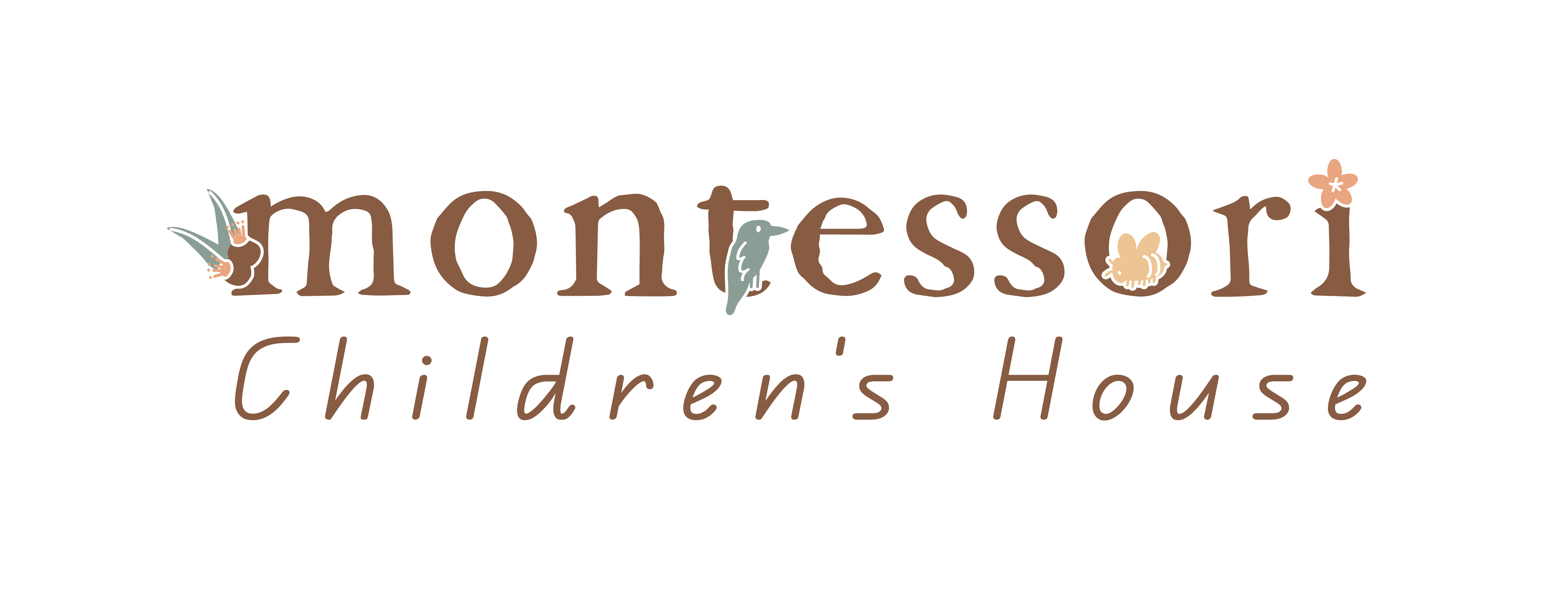
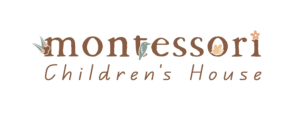
Recent Comments